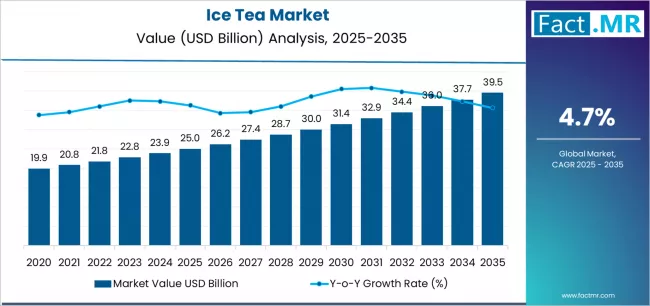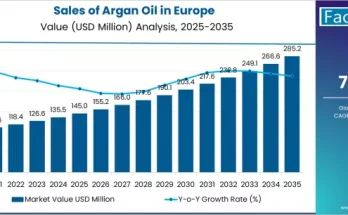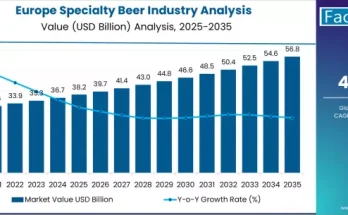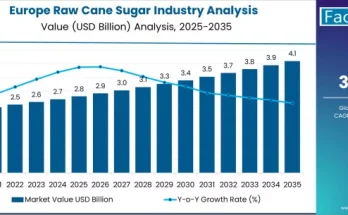The global ice tea market is gaining remarkable momentum, driven by shifting consumer preferences toward natural, low-sugar, and ready-to-drink (RTD) beverages. According to a new report by Fact.MR, the market is valued at USD 25.0 billion in 2025 and is projected to reach USD 39.5 billion by 2035, recording an absolute growth of USD 14.5 billion over the forecast period. This represents a total expansion of 58.0%, with the market forecast to grow at a CAGR of 4.7% between 2025 and 2035.
As consumers increasingly favor functional beverages with health benefits, ice tea has emerged as a refreshing and versatile alternative to carbonated soft drinks, offering a blend of hydration, natural flavor, and wellness appeal.
Strategic Market Drivers
- Health and Wellness Revolution Fuels Demand
The global shift toward healthier lifestyles is the strongest growth driver for the ice tea market. Consumers are actively reducing sugar intake and seeking beverages rich in antioxidants, vitamins, and botanical extracts. Ice tea — particularly green, herbal, and organic variants — aligns perfectly with this trend.
Manufacturers are responding by innovating low-calorie, sugar-free, and fortified ice teas featuring natural sweeteners such as stevia and monk fruit. Additionally, the incorporation of adaptogenic ingredients like ginseng and chamomile is redefining functional hydration.
- Expanding Ready-to-Drink (RTD) Segment
The RTD ice tea category continues to dominate global consumption, supported by busy urban lifestyles and increasing convenience-driven purchases. Shelf-stable and refrigerated formats are witnessing robust demand across supermarkets, online platforms, and foodservice outlets.
Innovation in packaging — including recyclable PET bottles, aluminum cans, and tetra packs — is enhancing portability and sustainability, two key factors shaping consumer decisions in mature and emerging markets alike.
- Premiumization and Flavor Diversification
The modern ice tea consumer seeks both indulgence and wellness. This has led to a surge in premium and artisanal offerings, emphasizing natural ingredients, exotic flavors, and clean-label formulations. Brands are experimenting with fusion teas such as peach-ginger, hibiscus-lime, and matcha-lemon, while also expanding into cold-brewed and sparkling variants.
Browse Full Report: https://www.factmr.com/report/ice-tea-market
Regional Growth Highlights
East Asia: The Global Growth Powerhouse
East Asia leads the ice tea market, with China and Japan serving as key consumption and production hubs. The strong cultural association with tea, coupled with rapid innovation in bottled and flavored formats, drives regional dominance. Local players are leveraging e-commerce and health-oriented marketing to target younger demographics.
North America: Functional and Natural Formulations Take Center Stage
In the United States and Canada, the shift from sugary sodas to healthier beverages has created fertile ground for ice tea brands. The growing preference for unsweetened and organic teas, coupled with the rising popularity of cold brew and herbal infusions, continues to expand the market footprint.
Europe: Premiumization and Sustainability Trends
Europe’s ice tea market is shaped by strong demand for premium, ethically sourced ingredients and sustainable packaging. Countries like Germany, France, and the U.K. are driving innovation through organic-certified products and carbon-neutral production initiatives.
Emerging Markets: Rising Disposable Incomes and Urbanization
Rapid urbanization and rising disposable incomes in Latin America, the Middle East, and South Asia are boosting consumption of RTD ice teas. Young consumers in these regions are drawn to international flavors and branded beverage experiences, creating long-term growth potential.
Market Segmentation Insights
By Type
- Black Ice Tea – Traditional favorite with mass appeal across demographics.
- Green Ice Tea – Gaining traction for its health benefits and natural antioxidants.
- Herbal & Fruit-Based Ice Tea – Rising popularity in wellness and functional beverage segments.
- Others (Oolong, White, and Specialty Blends) – Emerging niche segment among premium consumers.
By Distribution Channel
- Supermarkets & Hypermarkets – Continue to dominate global sales.
- Convenience Stores & Cafés – Expanding reach among on-the-go consumers.
- Online Retail & D2C Platforms – Fastest-growing channel, driven by personalized marketing and subscription models.
Challenges and Market Considerations
Despite favorable growth prospects, the ice tea market faces several challenges:
- Raw Material Volatility: Fluctuations in tea leaf and natural flavoring prices impact production costs.
- Sugar Tax Regulations: Stricter labeling and taxation policies are prompting reformulations.
- High Competition: The beverage market’s saturation requires continuous product innovation and brand differentiation.
- Supply Chain Sustainability: Ethical sourcing and environmental compliance remain top priorities.
Competitive Landscape
The global ice tea market is highly competitive, characterized by innovation, brand partnerships, and premium product launches. Leading companies are investing in sustainable sourcing, digital marketing, and product diversification to strengthen market presence.
Key Players in the Ice Tea Market:
- The Coca-Cola Company (Fuze Tea & Gold Peak Brands)
- PepsiCo, Inc. (Lipton Iced Tea, in partnership with Unilever)
- Nestlé S.A.
- Arizona Beverage Company LLC
- Ito En, Ltd.
- Keurig Dr Pepper Inc.
- Asahi Group Holdings, Ltd.
- Suntory Holdings Limited
- Unilever PLC
- Nongfu Spring Co., Ltd.
Future Outlook: Toward a Healthier, Sustainable Beverage Future
Over the next decade, the ice tea market will continue to evolve through sustainability, wellness innovation, and digital engagement. The fusion of natural ingredients, smart packaging, and eco-conscious branding will define the next wave of beverage innovation.
With its unique balance of taste, convenience, and health appeal, ice tea is set to remain a cornerstone of the global functional beverage landscape — offering consumers a refreshing path to wellness and brands an avenue for long-term, sustainable growth.



